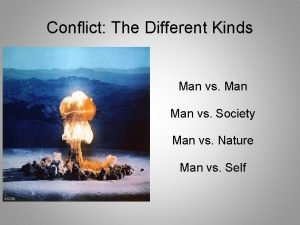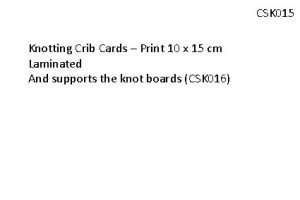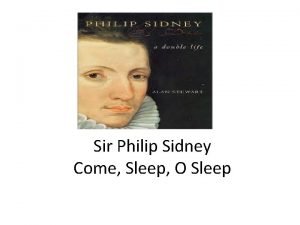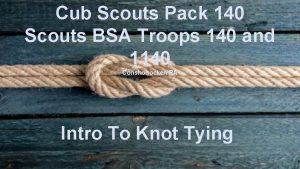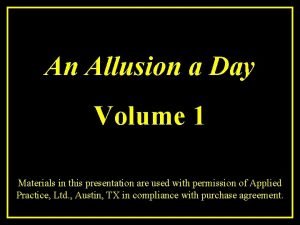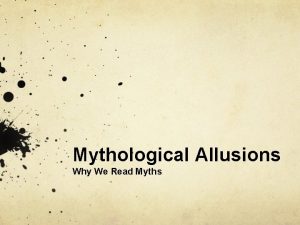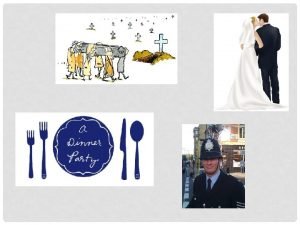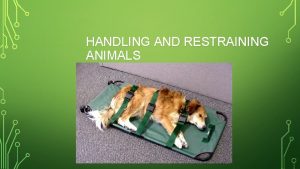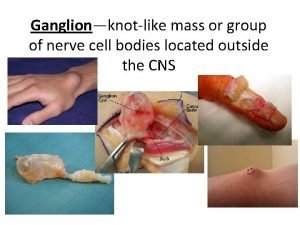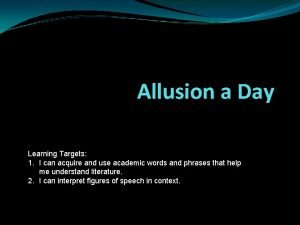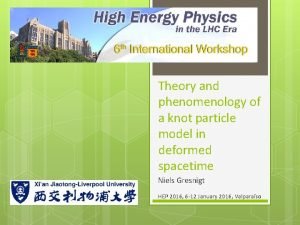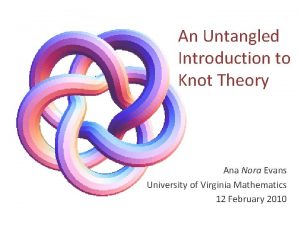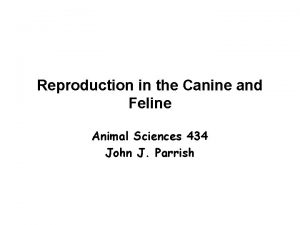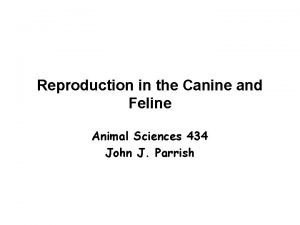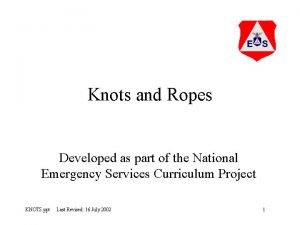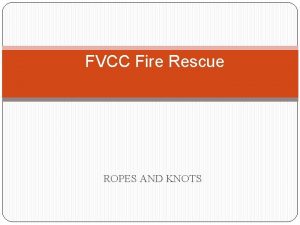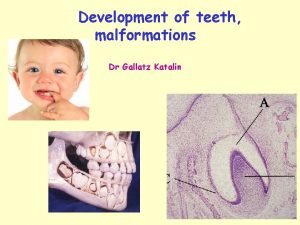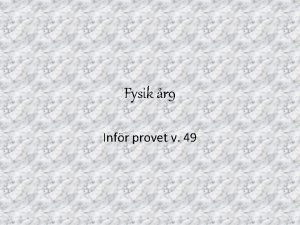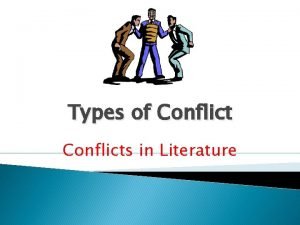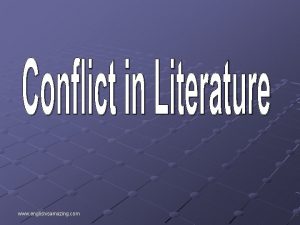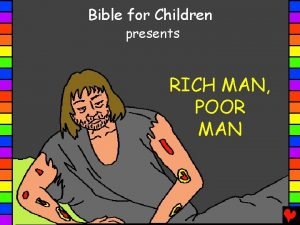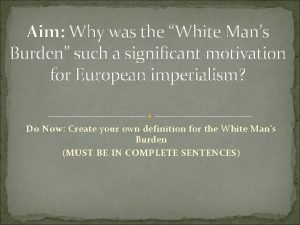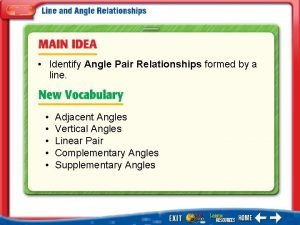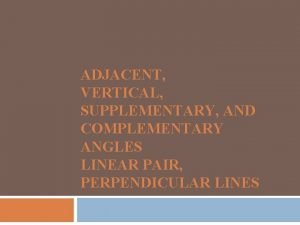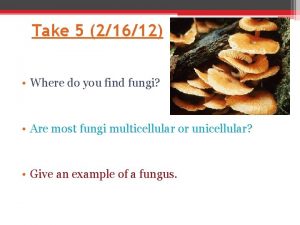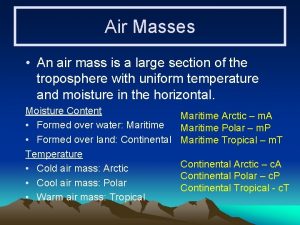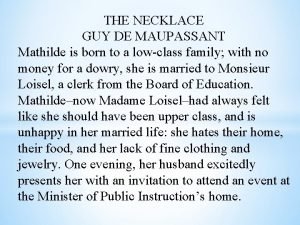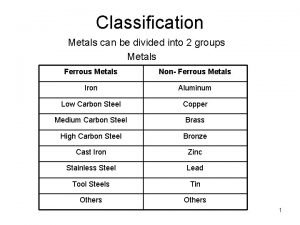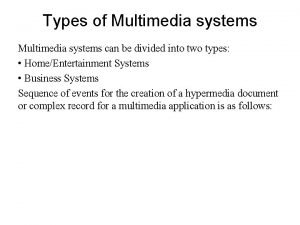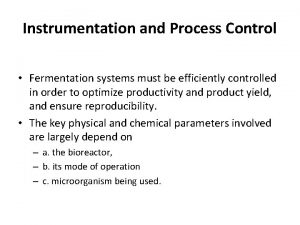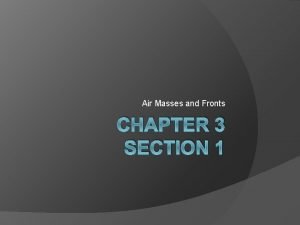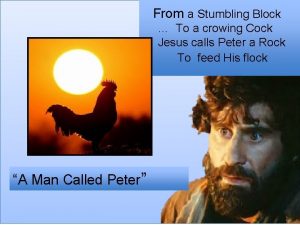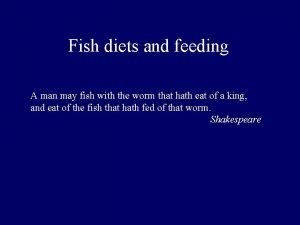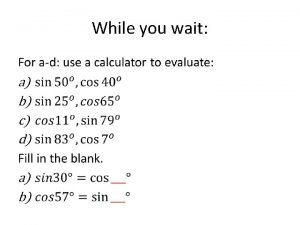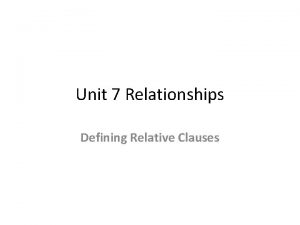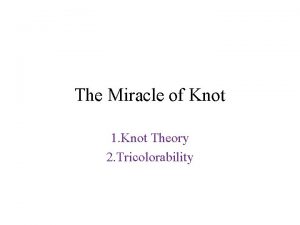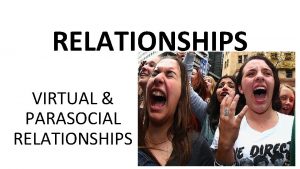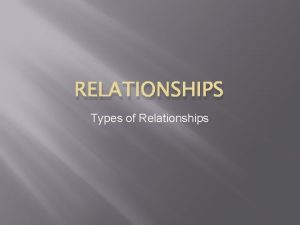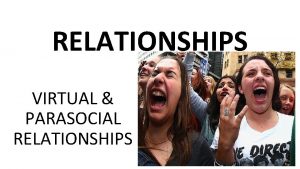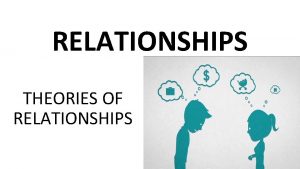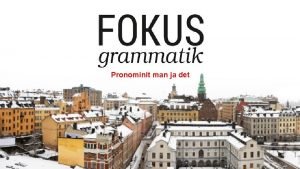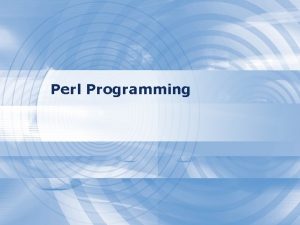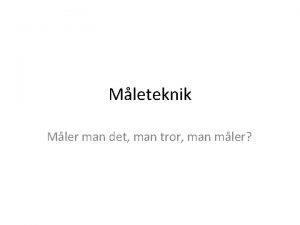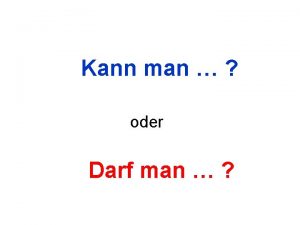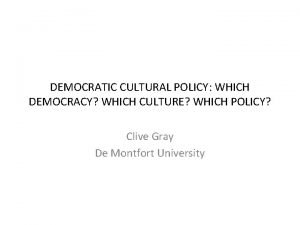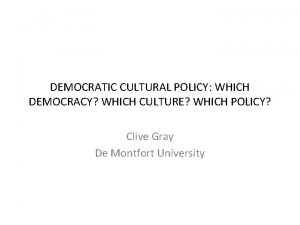Man is a knot into which relationships are


























































![“[Other historians of the French Revolution] turned away from the bewitching drama of events “[Other historians of the French Revolution] turned away from the bewitching drama of events](https://slidetodoc.com/presentation_image_h2/e63b4e23ab6b076da0d6f49103b03779/image-59.jpg)






- Slides: 65


“Man is a knot into which relationships are tied. ” Antoine de Saint-Exupéry

Narrative: three strategies Year Group Substantive Content The Crusades Second-order concept Interpretations Year 9 19 th Century Protest Change Interpretations Year 8 The Tudors (Mary I) Change Interpretations Year 7

Year 7: Medieval 1: Who belongs in a story about the Third Crusade? Students deconstruct historians’ narratives, and then construct their own

I burnt through your Becket timeline of religious change in 30 seconds I chewed up your causal cardsort on why William won at Hastings in 2 minutes I spotted diversity in your Medieval Village before I even entered the classroom My Year 7 Thursday Class

Your move. Impress me. Historical Scholarship: Muslim/Christian The Crusades

1. How do these interpretations disagree? 2. Why do they disagree? Deconstructing Interpretations • Too Simple • Too deterministic An historical interpretation is not an inevitable product of the period in which it was produced. Each author has established and used evidence in ways that we cannot categorise simplistically, and for reasons about which we can only speculate.

Type of interpretation (scholarly, popular, educational…etc) What was the purpose (& intended audience). to create new knowledge? to persuade? to entertain? to inform? to commemorate? to educate? to preserve? What is it? What is it saying? How and why was this constructed? What is the relationship between the interpretation and evidence? Which parts are factual, which are points of view, which are imagined? What does it say/ show explicitly / implicitly (message? argument? style? tone? ) How has the interpretation been affected by the context in which it was created? Available sources? trends in scholarly interpretation? methods? earlier works on the same theme? theory? ideology? values? nationality? personality? funding/resources? patronage?

Alright. I’ll read the books. Then do you want me to write another essay? Boring… What about writing a story…?

Write your own narrative about the Third Crusade. Constructing a narrative • NOT simple! Underrated skill (Lang) To display evidential control and a sense of audience is not easy (Counsell) Involves artistry (Kemp) Key challenge: how to engage and draw in the reader (a process requiring rhetorical effect and a shaping of expectation, through phrasing and arresting word choice), whilst also striving to report events accurately and avoiding unwarranted claims?

In the Third Crusade… • • To what extent could Richard be described as a ‘shrewd’ leader, if he rather hot-headedly massacred 3, 000 Muslim prisoners outside of Acre in 1191? Can Richard I still be described as an ‘intelligent’ military leader, if he was captured by the Duke of Austria on his return home? Can Saladin be described as a ‘brilliant’ strategist if he lost quickly and decisively to Richard in the Battle of Arsuf? Was Saladin ‘courageous’ if he slept in a wooden tower because he was fearful of being assassinated? • The choice of adjectives or adverbs to describe characters’ actions within a narrative appears to be quite a large challenge. • Without any character description, the narrative would be dry and uninteresting; yet too much praise, exaggeration or hyperbole, and the narrative would stray from the evidential record.

STARTER: what difference can a single word make? Extract from a book on one of the battles of the Third Crusade (the Battle of Arsuf): “Saladin’s trumpeters and drummers set up a terrible noise. Yet the Crusaders stood firm, suffering heavy losses of horses but little else…Richard ordered the full might of the Christian cavalry to charge and hammered into the enemy. The entire Muslim force was beaten back and Saladin retreated. Richard personally cut down the enemy vigorously and his clever leadership dealt a second terrible blow to Saladin’s reputation.

STARTER: what difference can a single word make? “Richard personally cut down the enemy vigorously and his clever leadership dealt a second terrible blow to Saladin’s reputation. ” What if we changed the word to…? • Gently • Clumsily • Wearily • Cheerfully • Carefully

Who belongs in a story about the Third Crusade? Our new Enquiry Question History skill to be practised: Interpretations KEYWORD: Interpretation An explanation of something from a particular viewpoint. • We are continuing with our depth study on the Crusades. • So far we have looked at why people went on crusade, and at the highs and lows of the first four crusades (there were about 8 in total!) • In this lesson, we are going to look at an historian’s story of the Third Crusade and try to understand what he thinks about the two leaders. • An historian’s opinion is often called his interpretation.

Enquiry Question: Who belongs in a story about the Third Crusade? Historian’s Text TASK BOX: 1. In pairs, as we are reading the historian’s story, place a character card next to where they are mentioned. 2. Which characters in the ‘story’ of the crusade were not used? Which characters were used many times? What does this tell us about the author?

King Richard I King Philip II of France European Jews Comnenus, ally of Saladin in Cyprus (1) Saladin (also known as The Sultan or Emir) Ibn al-Zaki A Muslim Preacher Pope Gregory VIII Emperor Frederick I Duke Henry of Burgundy, a French nobleman Abu Yusuf Yaqub al. Mansur Muslim Caliph (Leader) Al-Adil, Saladin’s brother (also known as Guy of Lusignan, King of Jerusalem Saphadin)

An example of how two high-attaining students re-told the story of the Third Crusade, using character cards, words and arrows, to show their understanding of what happened in Phillips’s narrative interpretation.

TASK BOX: How did Hillenbrand describe characters and events? 1. Draw arrows to the facts that may have been used to back-up the author’s descriptions below. 2. Circle those facts that appear to challenge the author’s description. 3. How might you change the descriptions below, so that you take all these facts into account? “Richard was shrewd” [intelligent, alert, sharp] “Saladin was a strong military leader” “The conquest of the city of Jerusalem was a disastrous event” Richard I spent many months preparing for his crusade Richard beat Saladin at Acre and Arsuf Richard was captured & England had to pay the equivalent of £ 2 billion for his release Saladin was the first Muslim leader to unite the Muslim cities of Aleppo, Mosul & Damascus After capturing Jerusalem from the Christians, Saladin did not kill them Saladin worried about being killed so slept in a wooden tower rather than a tent Saladin destroyed towns in a whole region and killed many knights after they tried to murder him twice The Muslims lived in the Holy Land for hundreds of years before the Christians came The crusaders thought they were fighting a holy war to regain land that was their ‘right’ due to their religion

TASK BOX: Why might Hillenbrand describe characters and events in this way? Draw arrows to match information about the author’s background and purpose (left) to how she wrote her story (right). A. Hillenbrand can read and understand Arabic B. Hillenbrand’s focus is deliberately on the Muslims in the Crusades C. Hillenbrand’s aim is not to just tell a story, but to explore ideas D. Hillenbrand is Professor of Islamic History at Edinburgh university E. Hillenbrand has travelled extensively in Turkey & Syria 1. Hillenbrand did not mention the European kings Phillip II of France or Frederick I 2. Hillenbrand mentioned Saladin many times but only mentioned Richard a few times 3. Hillenbrand included two religious Muslim characters who were in the ‘background’ and not actually involved in the crusade itself 4. Hillenbrand suggested that the Crusaders invaded Muslim lands, rather than the Muslims invading Christian lands 5. All Hillenbrand’s sources were Muslim 6. Hillenbrand gave less detail on the ‘events’ that make up the story than Phillips did 7. Hillenbrand shows why Jerusalem is important to Muslims rather than Christians

TASK BOX: Why might Phillips describe characters and events in this way? Draw arrows to match information about the author’s background and purpose (left) to how he wrote his story (right). A. Phillips is an English historian, from Bristol 1. Phillips focussed on Christian & the Pope’s reasons for fighting, but left out Muslim ones B. Phillips concentrates on crusaders’ religious motives 2. Phillips spent more time on how Richard moved his troops than on Saladin’s moves 3. Phillips wrote more about Richard I & his troops than about French King Philip II’s men C. Phillips tries to be sympathetic towards the crusaders and tries to see things their way 4. Phillips tried to justify why Richard I had to massacre 3, 000 Muslims D. Phillips cannot read Arabic very well 5. Phillips wrote about Richard’s preparations for crusading but not Saladin’s E. Phillips tried to write a book for many people to read, not just experts 6. Phillips left out some characters involved 7. Phillips gave a positive description of a king who spent little time in his own country!

Conclusion: Who said what and why? “Refugees from the Holy Land told the story of the Muslim invasion of Jerusalem… including Saladin’s slaughter of the Christians” Phillips Hillenbrand “The Crusaders turn up out of the blue…[and after several crusades] the Muslims came to expect invasion” who invaded whom?

My purposes: • To educate • To entertain • To show Muslim & Crusader views My chosen word (Saladin) ________ A stronger word is ________ My chosen word (Richard) ________ A stronger word is ________ Fact Box 1 This is where you will write your story of the Third Crusade. Fact Box 2 Fact Box 3 Fact Box 4 TASK BOX: • Why do you think that the historians Phillips and Hillenbrand might have differed in their choice of characters? • Does it matter which characters you included, and how you described them? • Did you leave out any characters or talk about some characters more than others? Why not?

Activity 4 Summary: Deconstructing and constructing historical narrative on the Third Crusade AIMS 1. Challenge a bright and sparky Year 7 class by adding more depth and complexity to their knowledge 2. Encourage pupils to think about different processes of argumentation in two contrasting historical interpretations 3. Decide for myself whether the creation of an historical narrative is cognitively demanding. APPROACH Using two books on the Crusades, written from contrasting perspectives, help pupils: 1. Learn about the Third Crusade in more depth than what is offered in a textbook 2. Speculate about why the authors’ interpretations differ 3. To create their own narrative about the Crusade.

Activity 4 Summary: Deconstructing and constructing historical narrative on the Third Crusade STRENGTHS 1. 2. 3. The challenge of writing an historical narrative revealed very effectively who had understood what had happened in the Third Crusade, and in what order (‘knowledge adequacy’) Marking the narratives allowed me to ask a wider variety of questions than normal (as opposed to the usual ‘remember P. E. E. ’) In their narratives, pupils revealed contemporaries’ relationships (to each other and to the setting) LIMITATIONS 1. There were some examples of simple regurgitation in the final narratives (pupils ‘chucking things down’) 2. Reinforcement of the correct sequence of events was needed for some students 3. There was little conscious attempt by the students to show a particular viewpoint

Activity 4 Summary: Deconstructing and constructing historical narrative on the Third Crusade • When Olly wrote that Richard ‘dealt with the Muslim prisoners and Saladin’s slowing down tactic fiercely’ at Acre, he was commenting on Richard’s relationship with Saladin, as a man who was willing to stand up to his enemy. • When Janice wrote, ‘Saladin made sure that his followers were loyal to him by doing things like sharing their meals’, she revealed something of Saladin’s relationship with his men. • As a final example, when Jemal commented that ‘the crusaders were bothered by the hot desert that Richard made them march through, even though it brought them closer to Jerusalem’, he disclosed something of the relationship between the crusaders and their contemporary setting, and of the relationship between Richard and his men. ‘The cognitive function of narrative form… is… to body forth an ensemble of interrelationships’ (Louis Mink).

Year 9: th 19 Century Britain 2. How close did Britain come to revolution in 1812 -1822? Using narratives to explore relationships and points of view: students create their own narratives about nineteenth century protest

I hate reading I have a very short attention span I am a complete drama queen My Year 9 Monday Class

Your move. Impress me. Historical Drama Nineteenth Century Britain

Key Context: 1812 • In this year, Lord Liverpool became Prime Minister, after the previous Prime Minister, Spencer Perceval, was murdered • Britain was still at war with France, which was ruled by the emperor Napoleon, who was feared as a great military leader • Napoleon had attempted to blockade England, stopping goods like wheat from reaching England. This drove up bread prices because the English were reliant on English wheat (rather than foreign wheat) to make bread. Because English wheat was in high demand, English landowners could charge a lot of money for it. • The Prince Regent, a deeply unpopular king due to his ruinously expensive lifestyle, was ruling on behalf of his father, George III (who had gone mad). • The working and middle classes could not vote and there was a very high rate of poverty. Working conditions in the industrial cities were often horrific. • At this time there was no police force, and the government relied on the army if there was trouble, or magistrates in local areas.

What ingredients do you need for a revolution?

How close did Britain come to revolution in 1812 -22? Liverpool’s Cabinet Viscount Castlereagh, Foreign Secretary Lord Liverpool, Prime Minister Viscount Sidmouth, Home Secretary Nicholas Vansittart, Chancellor of the Exchequer Government Supporters Oliver the Spy William Cartwright The Radicals Henry Hunt Arthur Thistlewood James Watson William Benbow Jeremiah Brandreth

Robert Banks Jenkinson, Lord Liverpool Prime Minister Nicholas Vansittart Chancellor of the Exchequer Tory. Experienced: was Foreign & Home Secretary Had served under Pitt. Inherited debt & heavy taxation. Unpopular. Robert Stewart Viscount Castlereagh Foreign Secretary “Oliver the Spy” Alien Section Helped defeat Napoleon. Committed Suicide in 1822. Duelled Canning. V. unpopular due to his repressive measures. Also known as W. J. Richards. Building Surveyor-come-Agent Provocateur. Viscount Sidmouth Home Secretary William Cartwright Factory Owner Had been Prime Minister (1801 -1804) between Pitt’s time in power. Often ruthless against radicals. Owned a mill in Yorkshire, in the North of England. Victim of Luddism.

Henry Hunt Radical Speaker James Watson Radical Publisher Radical speaker calling for working men to vote. Previously a farmer. Radical publisher/activist Printed books by people with ‘dangerous’ ideas like ‘human rights’ Arthur Thistlewood Radical Political Activist William Benbow Shoemaker. Unsuccessful farmer. Travelled to France & USA, became a radical. Labelled ‘dangerous’. Preacher, Pamphleteer, Weaver, Pornographer. Interested in radical political ideas. Jeremiah Brandreth Stocking Maker. Last person to be beheaded by axe in Britain. Known as the ‘Nottingham Captain’.

Scene 1: Lord Liverpool takes office, 1812

Scene 2: War with France is over, 1815

Scene 3: Luddism, 1812 -1815

Scene 3: Luddism, 1812 -1815 How revolutionary were the Luddite outbreaks? Was this an economic or political action? 1. Choose a card: RED: Britain on brink of revolution, act now. ORANGE: Potential revolution, should the situation worsen. Monitor carefully. GREEN: Limited problem, no revolutionary threat

Scene 4: Spa Fields Riots, 1816 -17

Scene 4: Spa Fields Riots, 1816 -17 How revolutionary were the Spa Fields Riots? Was the uprising planned? Or was it spontaneous? 1. Choose a card: RED: Britain on brink of revolution, act now. ORANGE: Potential revolution, should the situation worsen. Monitor carefully. GREEN: Limited problem, no revolutionary threat

Scene 5: March of the Blanketeers, 1817

Scene 5: March of the Blanketeers, 1817 How revolutionary was the March of the Blanketeers? 1. Choose a card: RED: Britain on brink of revolution, act now. ORANGE: Potential revolution, should the situation worsen. Monitor carefully. GREEN: Limited problem, no revolutionary threat

Scene 6: Pentrich Rising, 1817

Scene 6: Pentrich Rising, 1817 How revolutionary was the Pentrich Rising? Was Oliver the Spy a paid informer or agent provocateur? Was there a genuinely revolutionary impulse? Or was it all a trick? 1. Choose a card: RED: Britain on brink of revolution, act now. ORANGE: Potential revolution, should the situation worsen. Monitor carefully. GREEN: Limited problem, no revolutionary threat

Scene 7: Peterloo, 1819

Scene 7: Peterloo, 1819 How revolutionary was the Peterloo massacre? 1. Choose a card: RED: Britain on brink of revolution, act now. ORANGE: Potential revolution, should the situation worsen. Monitor carefully. GREEN: Limited problem, no revolutionary threat

Scene 8: The Cato St. Conspiracy

Scene 8: Cato St. Conspiracy How revolutionary was the Cato St. Conspiracy? A wild, isolated incident or did it link with previous incidents? 1. Choose a card: RED: Britain on brink of revolution, act now. ORANGE: Potential revolution, should the situation worsen. Monitor carefully. GREEN: Limited problem, no revolutionary threat

Stage Direction 1. Vansittart (Chancellor), addressing Liverpool (Prime Minister) in the cabinet meeting 2. Sidmouth (Home Sec) and Vansittart (Chancellor) speaking to Liverpool in the cabinet meeting 2. Benbow (a shoemaker), talking about the government in the pub 3. Sidmouth (Home Sec)’s view of the working classes he sees at Cartwright’s factory 3. Cartwright (Factory Owner)’s view of the workers he is watching at his cotton mill 4. Thistlewood (Radical), talking about the government at a secret meeting of radicals 4. Hunt (Radical Speaker), addressing Watson and Thistlewood 4. Watson (Radical Publisher), addressing the crowd of workers at Spa Fields 4. Sidmouth (Home Sec), addressing Hunt after the Spa Field Riots 5. Benbow (a shoemaker), addressing Brandreth (a stocking maker) before his march to London 5. Benbow (a shoemaker) addressing the crowd in Manchester 6. Liverpool (Prime Minster) talking about Brandreth’s punishment 7. Liverpool (Prime Minister), speaking about the magistrates’ actions at Peterloo 8. Liverpool (Prime Minister), asking Sidmouth (Home Sec) to deal with Thistlewood (Radical) Justification

Sighing Applauding Smiling and nodding Shaking hands happily Rolling their eyes unsympathetically Waving wildly Wearily staring into space Shoulder slumping Pleading urgently Stealing sidelong glances Waving a hand dismissively Folding arms and pursing lips Shaking their fist Banging his fist on the table Speaking gravely and shaking his head Throwing his arms wide Unconcernedly taking a sip of drink Looking shocked and holding hands up Narrowing his eyes Setting his jaw and speaking tonelessly Blowing a kiss Shrugging indifferently Giving a thumbs up Punching the air

Key questions • Who were the two main ‘sides’ in this play? • Did everyone on the same ‘side’ think the same thing? • Which event brought Britain closest to revolution?

Your task is to write a story about protest in 1812 -22. 1. You are writing either from the point of view of the government or the working classes. Show they feel towards the ‘other side’ by using stage directions in your writing, e. g. “Benbow stared at the government sign saying ‘no meetings of more than 50 people’ with a mixture of anger and defiance, shaking his fist at the black lettering. ” 2. You must include three protests in your story, and include the correct dates and character’s names. 3. The best stories will include another element of argument. They will show revolutionary they believe the protest to be, e. g. – “Lord Liverpool was shocked by this latest protest. This was much more violent – almost revolutionary. ” – “Henry Hunt chose not to attend this meeting. He thought things were getting too serious. Not enough to topple the government, but enough to land him in serious trouble. ”

Year 8: Tudor England 3: Who was most in danger under Mary I? Using narratives to explore relationships and points of view: Students create a narrative about Mary I

I forget everything you have ever taught me I hate religious history What subject is this again? My Year 8 Wednesday Class

Your move. Wake me up Playing a memory game Tudor England

Read the biography of Mary I Record the following Individual Names Groups of people Important Events Challenge: information about what life was like in sixteenth-century England

What relationship do the past individuals/groups in the centre box have with the general setting (political, social, economic, religious, geographical). Draw arrows and describe the relationship along the arrows. England was a ‘second rate’ power, whereas Spain was the most powerful country at this time Henry VIII’s wars had cost England lots of money What relationship do the past individuals/groups in the centre box have with the events in this box? Draw arrows and describe the relationship along the arrows. Death of Mary I Wyatt’s rebellion What relationship* do these past individuals /groups have to each other? Draw arrows and describe the relationship along the arrows. Mary marries Philip Thomas Wyatt Nicholas Ridley Mary I Henry VIIII Protestants Catholics Anne Boleyn Ideas from the German Reformation were still spreading to England Hugh Latimer Edward VI Elizabeth Death of Edward VI Jane Grey Catherine of Aragon Burning of Protestant ‘heretics’ A third of the population lived in poverty Mary had once been declared illegitimate by her father after he married Anne Boleyn Philip of Spain There was an ongoing threat of an ‘Auld Alliance’ between France and Scotland Execution of Jane Grey England had undergone Protestant religious change under Henry and Edward; Mary reversed most of these changes *A relationship could be: a member of family, friendship, colleague, enemy, stranger. *Relationships may not be clear-cut or ‘one-sided’ – people may be allies in one issue, but enemies in another.

“Open the Door” Relationship Game • The ‘player’ in this game will be a student role-playing Mary I. • Other students, one at a time, will knock on the door. Mary will ask them to enter. The student will announce who they are (e. g. Elizabeth I, Latimer, Henry VIII, Edward VI etc. ) • Mary must say something and/or act in a certain way to demonstrate Mary’s relationship and viewpoint towards that person. • If Mary cannot convince the class that their reaction was appropriate, they will be replaced. • The Mary who survives the longest will be the winner.

Describing relationships • Simon Schama is a famous historian, who is known for writing well-researched, detailed and fascinating narratives (stories) about the past. • The language he uses is always deliberate, and is often beautiful. • At the start of his book on the French Revolution, called ‘Citizens’, he talks about two characters called Talleyrand Lafayette, and discusses how they relate to the people and events in the world around them. • Reading Simon Schama can show us how writing an historical story can help us to reveal a huge variety of past relationships.
![Other historians of the French Revolution turned away from the bewitching drama of events “[Other historians of the French Revolution] turned away from the bewitching drama of events](https://slidetodoc.com/presentation_image_h2/e63b4e23ab6b076da0d6f49103b03779/image-59.jpg)
“[Other historians of the French Revolution] turned away from the bewitching drama of events – the surface brilliance of the historical record…and towards scientific analysis and cool objectivity. What follows (I need hardly say) is not science. It has no pretensions to dispassion. Though in no sense fiction (for there is no deliberate invention), it may well strike the reader as story rather than history…It is a narrative not by default but by choice: with a beginning, middle and end…. ”

Describing relationships to events Simon Schama’s Citizens • This event disturbed his (or her) calm twilight. • These new events meant a passion rekindled and the pumping of the pulse. • His (or her) complexion at this time suggested a temper designed for ignition. • The event sounded an alarm in his (or her) intelligence. • He (or she) made no secret of enjoying it. Mary I Elizabeth Latimer Philip • Death of Edward • Grey’s execution • Mary’s Catholic laws • Wyatt’s rebellion • Burning of Protestants • Mary marries Philip

Describing relationships with other people Simon Schama’s Citizens • They were nervous before him (or her). • Their stupidity exasperated him (or her). • Whilst they were centre stage, he (or she) controlled the action behind the scenes. • He (or she) only had the deepest aversion towards them. (Aversion means hatred) • He (or she) was commanded to obey and respect them, although all his (or her) instincts urged him (or her) to question or disobey. • They were tied tightly together in an emotional knot. Mary I Elizabeth Latimer Ridley Wyatt Jane Grey Philip Protestants Catholics

Describing relationships with the setting Simon Schama’s Citizens • He (or she) kissed this new age with much ardour. (Ardour means enthusiasm). • He (or she) was not interested in the birdsong of the new political springtime. • He (or she) was destined to be an outsider. • He (or she) stepped onto what looked like a carpet of flowers, little imagining the abyss beneath. • The state of affairs enveloped him (or her) in anxiety. Mary I Elizabeth Latimer Philip

Now build your story… • Who will be your principal character? – Mary? (Easiest) Elizabeth? Latimer? Philip? (Hardest) • • At what point does the ‘story’ begin? At what point does the ‘story’ end? Which four events will form the ‘plot’? How will you demonstrate relationships?

Access Mary I: An excerpt from the biography of Chapter X: Mary Tudor becomes Mary I Start: It was 1553. _______for_____, in this year King Edward died of tuberculosis. This was _______ for ____ because… now describe the setting Paragraph 1: It was at this time that Mary imprisoned Jane Grey. This was ______ for ____ because …now describe what happened to Jane Grey Paragraph 2: After Mary was crowned Queen, she reversed Edward’s Protestant laws. This was _____ for _____ because… now describe some of the changes she made Paragraph 3: This was too much for Thomas Wyatt, who rebelled against Mary. This was _______ for _______ because…now describe the rebellion and how it ended. Paragraph 4: Having changed England’s laws and then married a Spanish Catholic, King Philip, Mary then turned to removing Protestants from England. ______ for _______, …now describe what happened to Latimer and Ridley. End: In 1558, and _______for _______, Mary died (probably from cancer).

Narrative is challenging because it can demand that students… ü Recall detailed knowledge of events and characters ü Organise that knowledge into a coherent structure ü Understand describe relationships between people in the past ü Understand describe relationships between people and their context (physical, intellectual, economic, social…) ü Write from a particular viewpoint
 Definition of man vs man conflict
Definition of man vs man conflict Thief knot vs square knot
Thief knot vs square knot Antigentest åre
Antigentest åre Come sleep o sleep summary
Come sleep o sleep summary Jenis simpul dan kegunaannya
Jenis simpul dan kegunaannya Arrow of light knot
Arrow of light knot 30 pieces of silver allusion
30 pieces of silver allusion Chinese knotting tutorial
Chinese knotting tutorial Cassandra allusion example
Cassandra allusion example Square knot
Square knot Tiedid
Tiedid Psychological restraint in animals
Psychological restraint in animals Knot like mass of nerve cell bodies
Knot like mass of nerve cell bodies Gordian knot allusion
Gordian knot allusion Cmsa wood
Cmsa wood Half boson knot
Half boson knot Leveche rüzgarı
Leveche rüzgarı Elbow restraint purpose
Elbow restraint purpose Viennese knot
Viennese knot What is a knot
What is a knot How long are dogs in heat
How long are dogs in heat How long does a dogs heat last
How long does a dogs heat last Knot tying ppt
Knot tying ppt Bell ringers knot
Bell ringers knot When inspecting kernmantle rope, look at the sheath:
When inspecting kernmantle rope, look at the sheath: Gallatz
Gallatz Four tail bandage
Four tail bandage Sin entered through one man
Sin entered through one man You live and learn
You live and learn Vatten tryck
Vatten tryck What is the meaning of a hungry man is an angry man
What is the meaning of a hungry man is an angry man Old man and new man
Old man and new man Mensen trening
Mensen trening The cask of amontillado conflict
The cask of amontillado conflict Types of conflict in literature
Types of conflict in literature Definition for internal conflict
Definition for internal conflict Carnal man
Carnal man Mein gott liebt alle menschen
Mein gott liebt alle menschen Rich man poor man bible
Rich man poor man bible One man's burden is another man's
One man's burden is another man's Which relationships describe the angle pair x° and 50º?
Which relationships describe the angle pair x° and 50º? Which relationships describe the angle pair x° and 50º?
Which relationships describe the angle pair x° and 50º? Among us
Among us Layers of the earth foldable
Layers of the earth foldable Where is the appalachian plateau located in georgia
Where is the appalachian plateau located in georgia Narrow neck which projects into the vagina inferiorly
Narrow neck which projects into the vagina inferiorly Mystericycle
Mystericycle Which major type of air mass is moving into the area?
Which major type of air mass is moving into the area? Mathilde loisel was born in a family of
Mathilde loisel was born in a family of Which phase transforms srs document into a form easily
Which phase transforms srs document into a form easily Metals are divided into
Metals are divided into Classification of multimedia
Classification of multimedia Which of the following sensor penetrates into the fermenter
Which of the following sensor penetrates into the fermenter Which function is incorporated into some intel cpus
Which function is incorporated into some intel cpus Sunligj
Sunligj Which major type of air mass is moving into the area?
Which major type of air mass is moving into the area? What dog man character are you
What dog man character are you What was the first man made fiber
What was the first man made fiber Which is the smallest tape worm infecting man?
Which is the smallest tape worm infecting man? Who cut off the soldiers ear
Who cut off the soldiers ear Carp teeth
Carp teeth Identify four ways to show respect in your relationships.
Identify four ways to show respect in your relationships. Trig tules
Trig tules To find the height h of a dinosaur in a museum
To find the height h of a dinosaur in a museum Stoichiometry mole island diagram
Stoichiometry mole island diagram Unit 7 relationships
Unit 7 relationships
